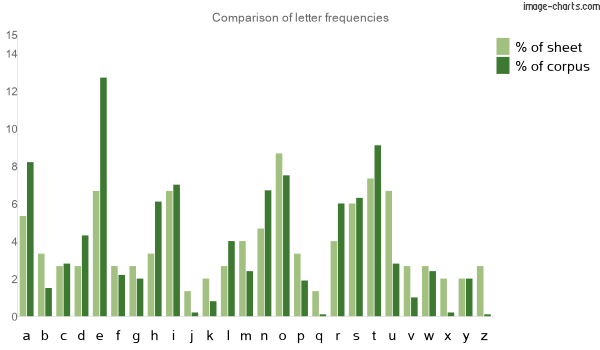Disappointing Stationery
So I was just making my dad’s birthday card. I felt it would benefit from some typography, so I got out a sheet of letter transfers I bought a while ago.
 Something immediately leapt out at me: where are all the Es? As anyone who was a bit obsessed with cryptography when they were young knows, the most common letter in English is E, by a long way, and there are hardly any Qs, Xs or Zs. This fact has helped us (and our enemies) win wars.
Something immediately leapt out at me: where are all the Es? As anyone who was a bit obsessed with cryptography when they were young knows, the most common letter in English is E, by a long way, and there are hardly any Qs, Xs or Zs. This fact has helped us (and our enemies) win wars.
So, here’s a graph of the relative letter frequencies on the sheet compared to the frequencies in the English corpus (from Simon Singh’s site):
 There are about half as many Es as there should be and loads more Qs, Xs and Zs than I will ever use. Now, the sheet’s quite small, so a statistician would do a hypothesis test to see if there is a significant difference between the sheet and the corpus, but I’m not one of those so I’m going to stop here, outraged at WH Smith’s lack of rigour.
There are about half as many Es as there should be and loads more Qs, Xs and Zs than I will ever use. Now, the sheet’s quite small, so a statistician would do a hypothesis test to see if there is a significant difference between the sheet and the corpus, but I’m not one of those so I’m going to stop here, outraged at WH Smith’s lack of rigour.
I suppose if they’d only put one Z in people would worry about a situation in which they needed to use two Zs, while it isn’t as immediately apparent that there aren’t enough Es to make use of the whole sheet.
The upshot is, I think my dad’s card is going to have to have somebody sleeping in a queue for a xylophone quorum, in order to get the most out of this sheet. My hands are tied by Statistics.
PS It isn’t all bad though – there are twice as many 1s as any of the other non-zero digits, so it at least makes a nod to Benford’s Law.